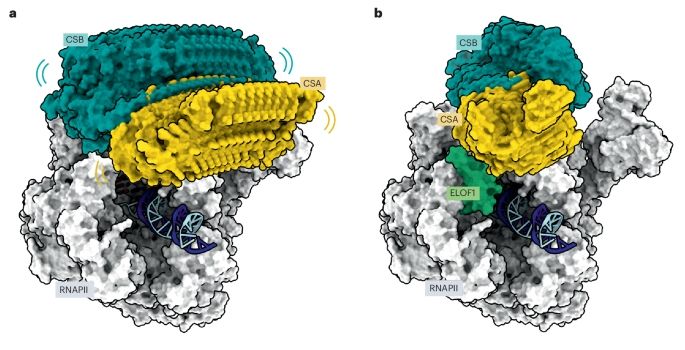
Dive into the step-by-step choreography of transcription-coupled DNA repair.
In our new review published in Nature Cell Biology, we explore what we know and what’s next in this exciting field of research!
www.nature.com/articles/s41...
@udupaarjun.bsky.social
PhD Student with @marcbuhler.bsky.social at @fmiscience.bsky.social Master's in Heidelberg, thesis with @karsten-rippe.bsky.social Editorial assistant at the @nightsciencepod.bsky.social gene regulation, chromatin, nuclear organisation, synthetic biology

Dive into the step-by-step choreography of transcription-coupled DNA repair.
In our new review published in Nature Cell Biology, we explore what we know and what’s next in this exciting field of research!
www.nature.com/articles/s41...
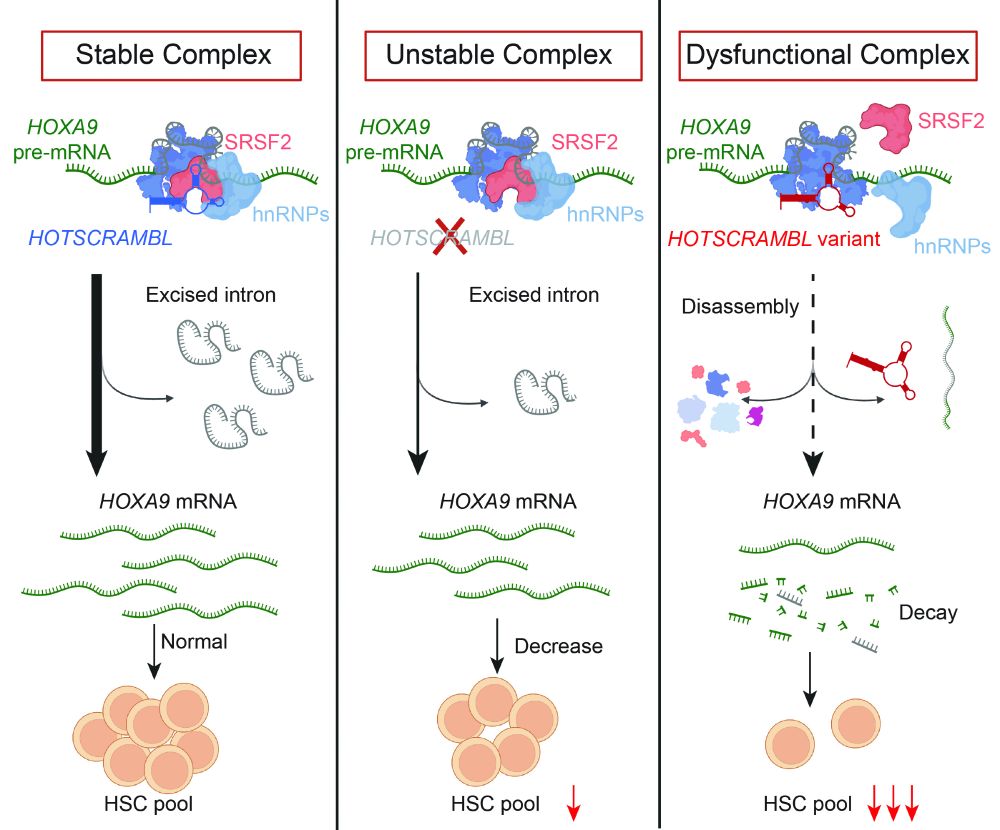
Delighted to have our preprint led by @lvchosen1.bsky.social
up: Genetic variation reveals a homeotic long noncoding RNA that modulates human hematopoietic stem cells
biorxiv.org/content/10.1...
🧵 below ...
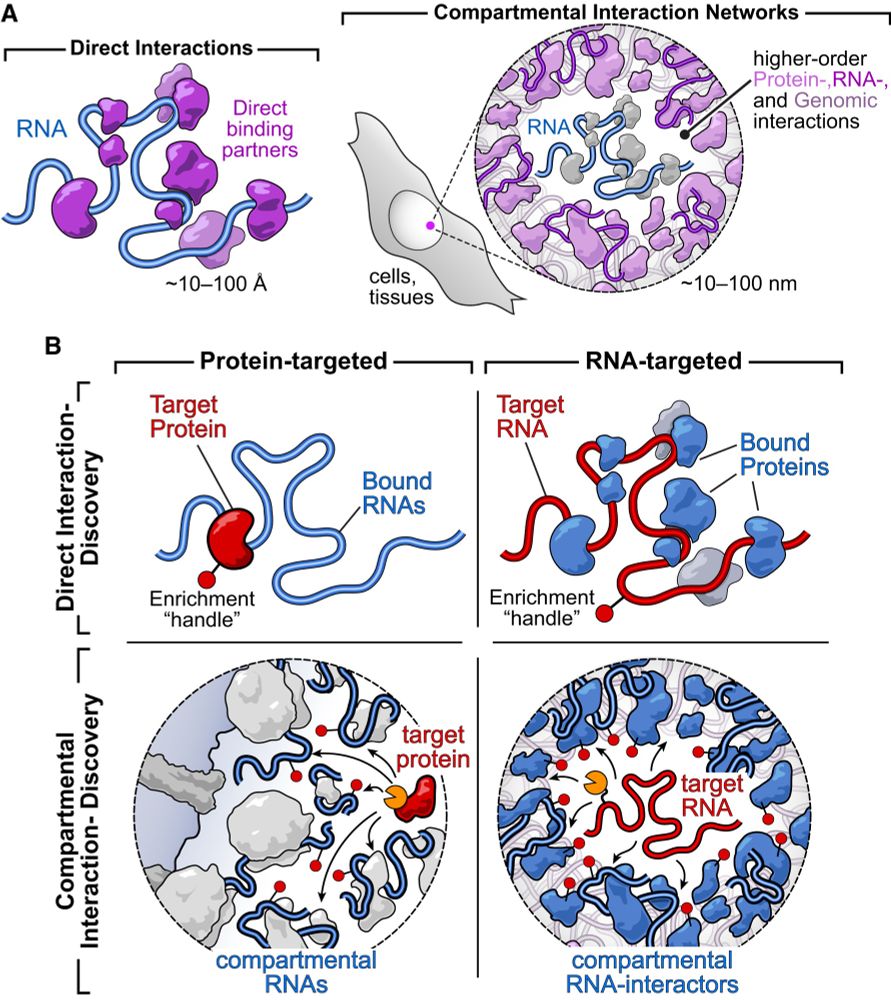
Hello! Ever wonder what's "talking to" your favorite transcript, but were too scared to ask? In our review in @cp-cellreports.bsky.social, @mardakheh.bsky.social and I highlight new RNA-focused tools for discovering RNA interactions across organizational scales. Checkit!
tinyurl.com/ydn6e3ac
AlphaGenome: advancing regulatory variant effect prediction with a unified DNA sequence model https://www.biorxiv.org/content/10.1101/2025.06.25.661532v1
28.06.2025 00:47 — 👍 1 🔁 1 💬 0 📌 0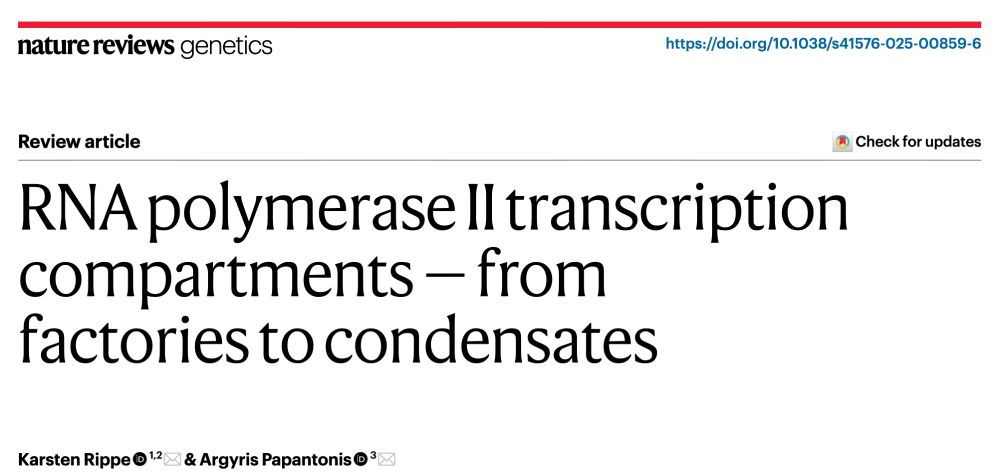
This is a piece that I and @karsten-rippe.bsky.social discussing a lot, and a topic that is very close to my heart. The editors @naturerevgenet.bsky.social gave us the stage to do so, and the final version of our review is now available under this link: rdcu.be/erP1u
A short thread follows 1/n

How do transcription compartments form — and does phase separation drive gene expression? I enjoyed discussing these questions with @akispapantonis.bsky.social a lot, and we put our thoughts together for @naturerevgenet.bsky.social, now out at rdcu.be/erP1u
19.06.2025 18:28 — 👍 53 🔁 14 💬 1 📌 1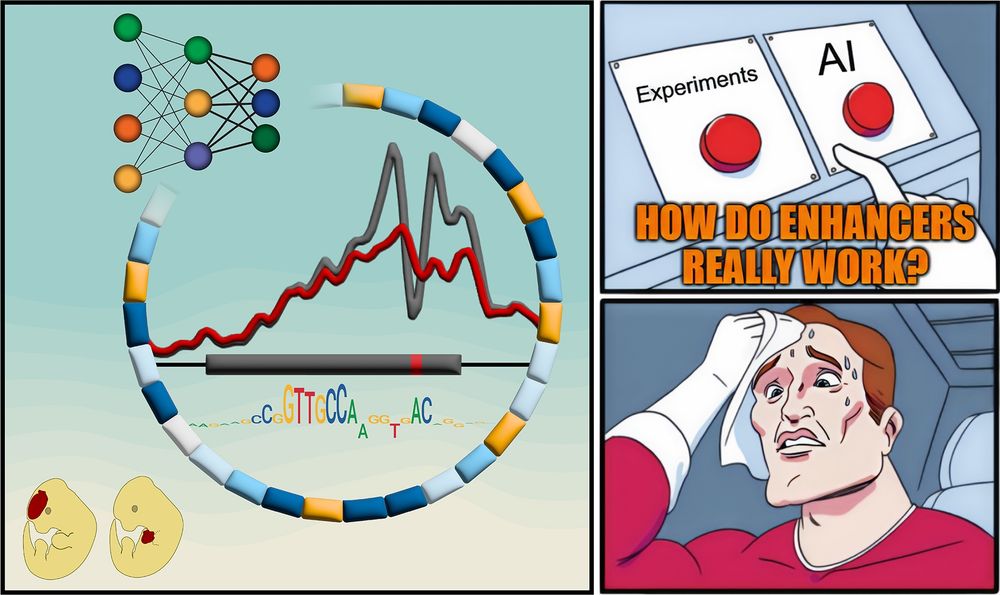
A meme-style comic panel with three parts. Left: A stylized enhancer with a mutation, surrounded by colored blocks representing functional motifs, a neural network diagram, chromatin accessibility signal traces, and a sequence motif. Two cartoon mouse embryos below show different LacZ reporter activity patterns. Top right: A hand hovers anxiously between two red buttons labeled “Experiments” and “AI,” with the caption “HOW DO ENHANCERS REALLY WORK?” Bottom right: A sweating superhero wipes his forehead, looking stressed about the difficult choice.
Textbooks: “Enhancers are just a bunch of TFBSs”
But how do they REALLY work?
New paper with many contributors here @berkeleylab.lbl.gov, @anshulkundaje.bsky.social, @anusri.bsky.social
A 🧵 (1/n)
Free access link: rdcu.be/erD22

In the nucleus, many intrinsically disordered proteins (IDPs) form condensates. What IDP sequence features drive this behavior? We developed CondenSeq, a high-throughput approach to measure nuclear condensate formation, and applied it to ~14,000 IDPs to find out!
rdcu.be/eq975
Awesome paper alert! Learn about spectrum of chromatin condensate morphologies due to elastocapillary effects (no, liquids do not need to be spherical!), from amazing duo @dnamystrom.bsky.social & Hongbo Zhao, w/ important contributions from co-authors Jorine Eeftens, Mikko Haataja, Andrej Kosmrlj.
16.06.2025 19:32 — 👍 23 🔁 7 💬 1 📌 0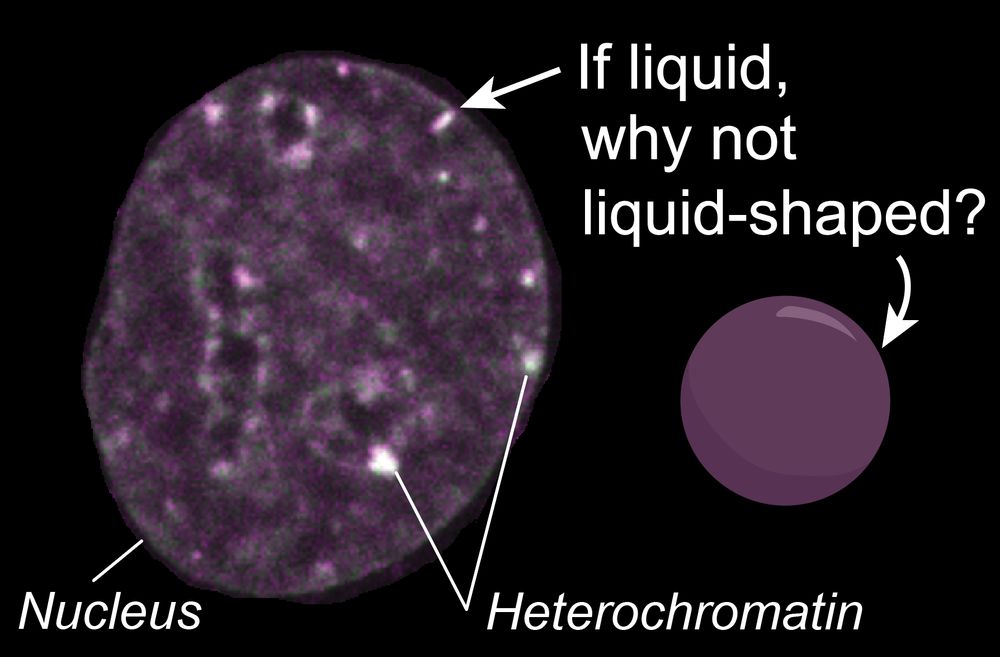
If heterochromatin is really a liquid-like condensate, why is it not spherical?
We investigated whether mechanical interactions between a condensate and a fiber network can explain the variety of morphologies seen in phase-separated nuclear compartments
www.biorxiv.org/content/10.1...
A high-affinity split-HaloTag for live-cell protein labeling https://www.biorxiv.org/content/10.1101/2025.06.15.659771v1
16.06.2025 03:45 — 👍 2 🔁 1 💬 0 📌 0
Capture C identifies promoter interacting sequences. MPRA tests sequences for regulatory activity. Here, we combined them both to test sequences with their target promoter. Amazing work by @colinearnould.bsky.social, Pia Keukeleire, Martin Kircher and many others.
www.biorxiv.org/content/10.1...
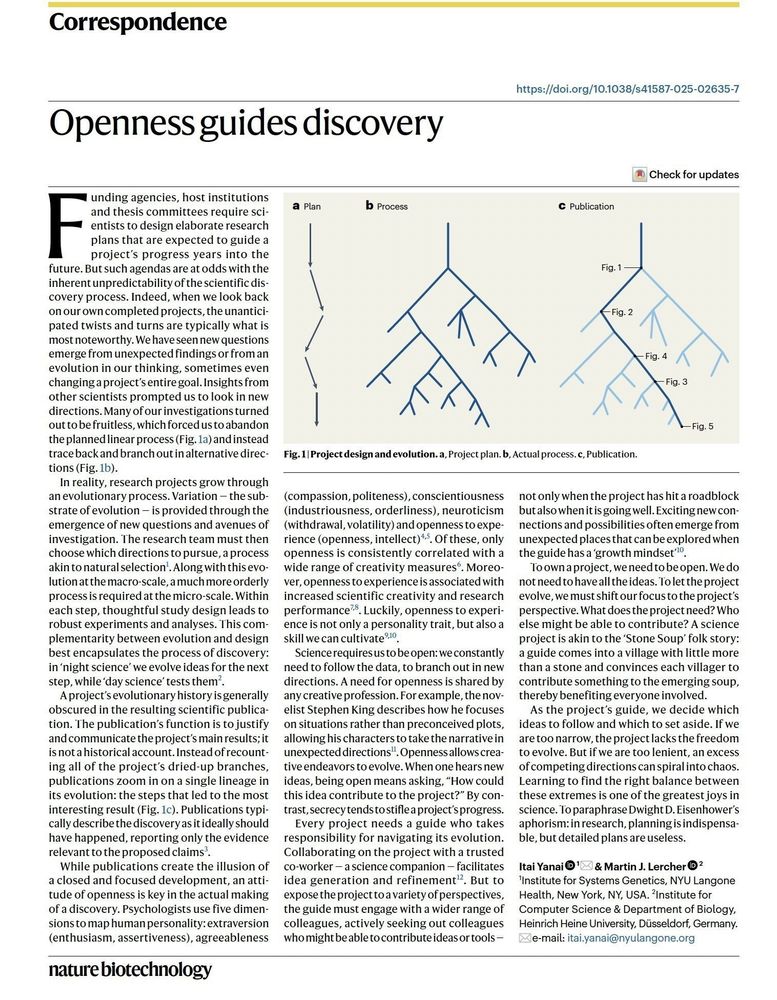
90% of doing science is being open to new ideas.
31.05.2025 18:14 — 👍 250 🔁 65 💬 2 📌 5
🔥 New episode of the Night Science podcast! The brilliant Eve Marder, professor at Brandeis University, talks with us about how "Recipe Science" ruins creativity.
Apple: podcasts.apple.com/us/podcast/n...
Spotify: open.spotify.com/episode/4mSv...
A protein-DNA surface hydrogel mechanically protects the cell nucleus https://www.biorxiv.org/content/10.1101/2025.05.21.655270v1
26.05.2025 22:48 — 👍 10 🔁 5 💬 0 📌 1Many people are busy doing recipe science.. If you ask a grad student what they need to do to get a paper, they'll tell you this & this, & they'll know that 2 years before the project is done. And I'm thinking, what's wrong with this picture?
Eve Marder, on @nightsciencepod.bsky.social
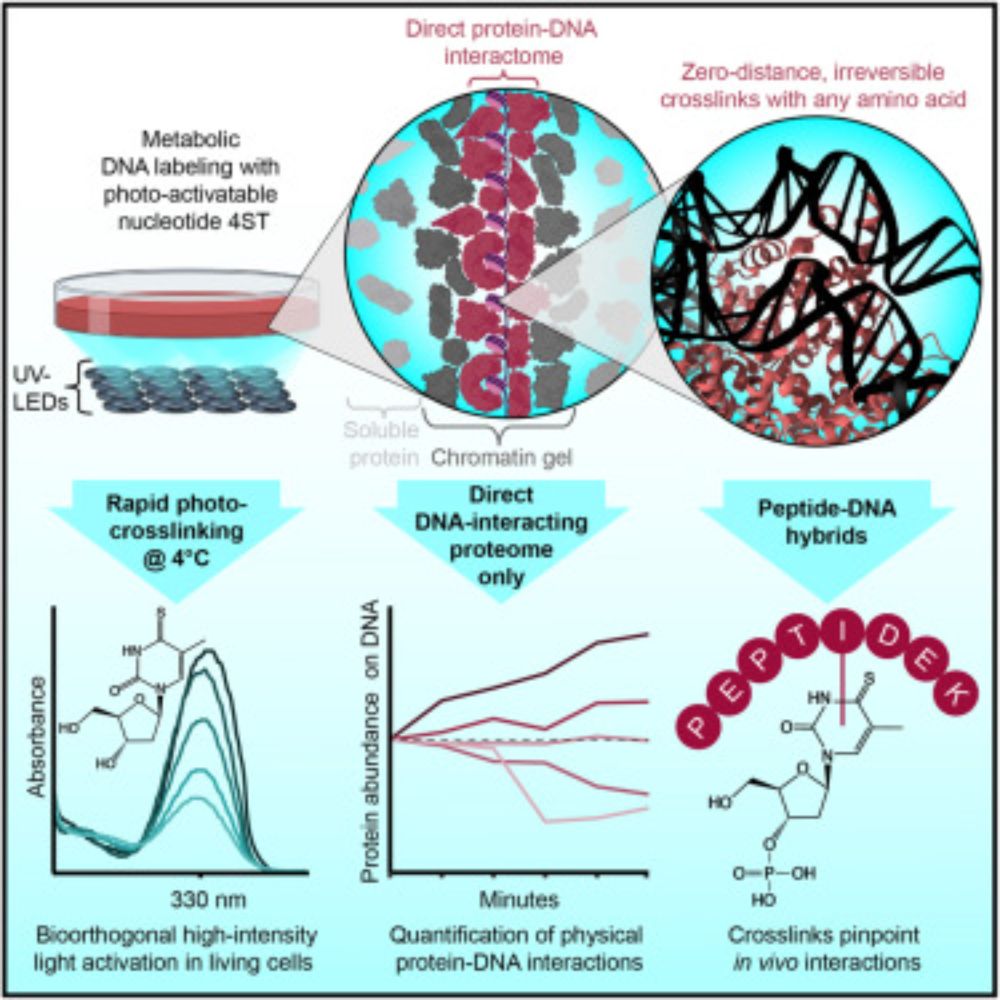
🚨Our new paper is online🚨
We use zero-distance⚡photo-crosslinking⚡to reveal direct protein-DNA interactions in living cells, enabling quantitative analysis of the DNA-interacting proteome on a timescale of minutes. #DNA #Chromatin #Proteomics
www.cell.com/cell/fulltex...
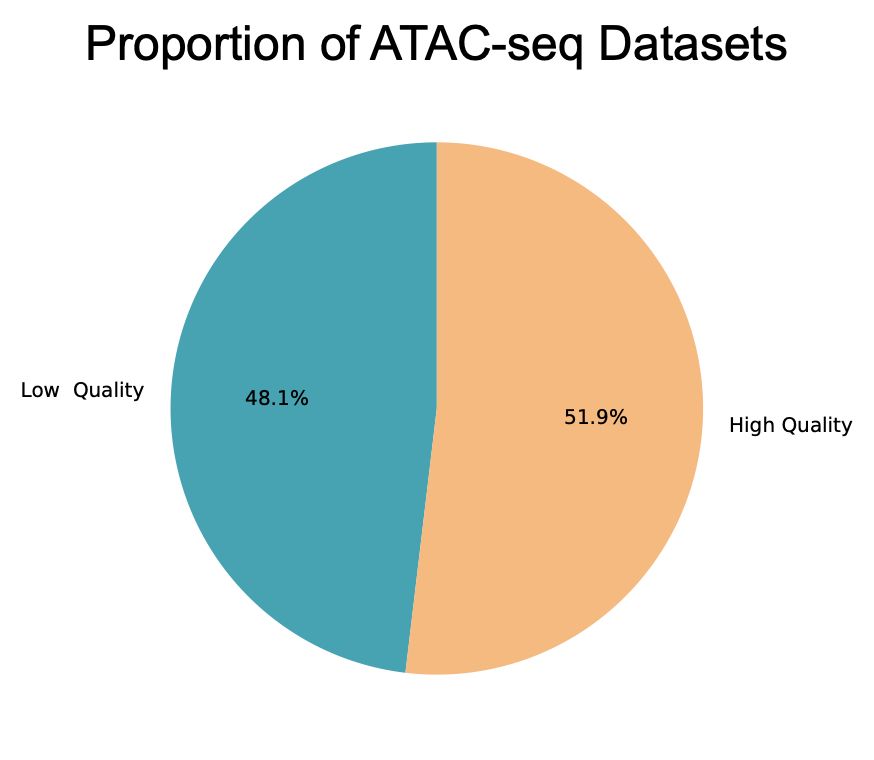
PSA: We just finished processing nearly all public ATAC-seq datasets from SRA (about 22,000 datasets). (Not?) Surprisingly, we had to throw-out nearly ~50% because they were low-quality (low signal-to-noise, duplicate rate, etc.). Check quality before analysis (TSS-enrichment is not sufficient!).
13.05.2025 19:42 — 👍 51 🔁 17 💬 6 📌 2Very happy to share the peer-reviewed version of our paper in which we study the formation and function of pair-wise and multi-way enhancer-promoter interactions in gene regulation (see thread below): www.nature.com/articles/s41...
13.05.2025 09:41 — 👍 102 🔁 33 💬 3 📌 3Promoter strength and position govern promoter competition https://www.biorxiv.org/content/10.1101/2025.05.06.652547v1
08.05.2025 03:19 — 👍 3 🔁 2 💬 0 📌 0So excited to see this live! Awesome work from
@giannatbusch.bsky.social on the concept of population-based synergy—using cell-to-cell heterogeneity to uncover new therapeutic vulnerabilities!
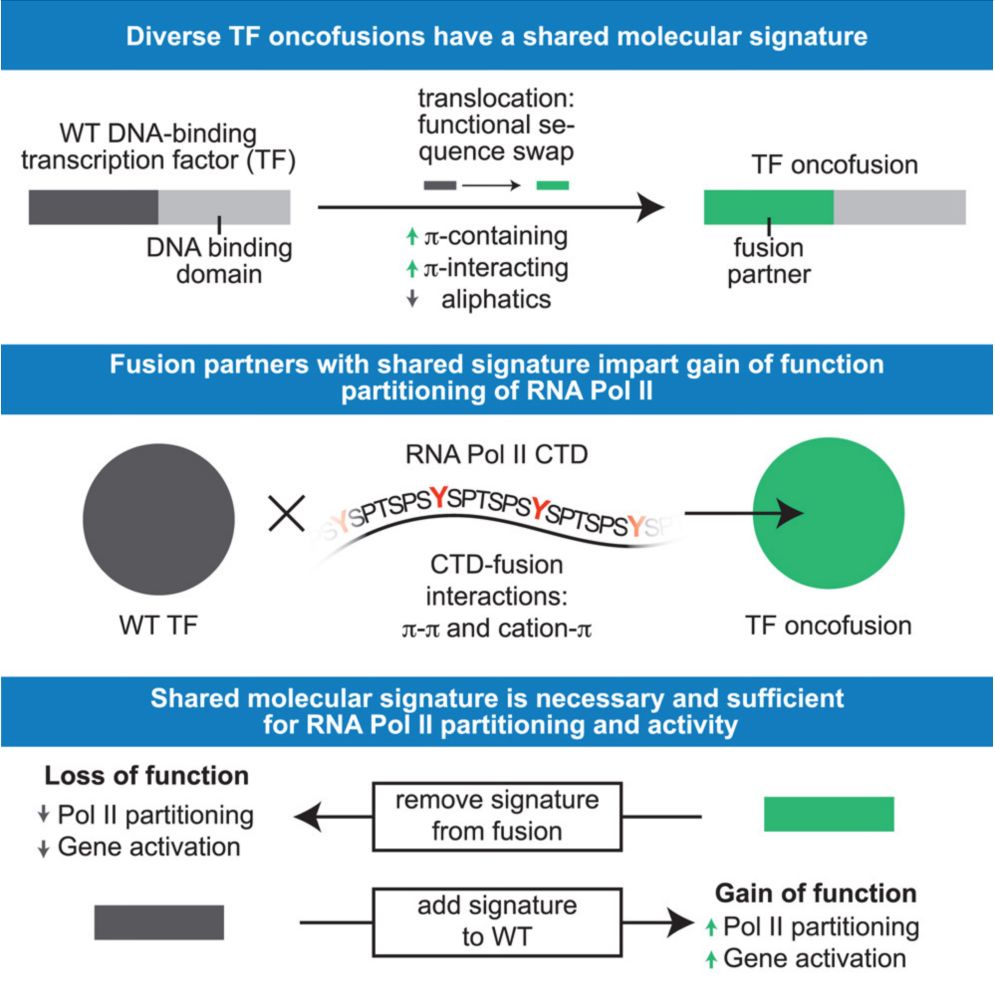
I am excited to share the latest paper from my lab where we leverage the selection bias of condensate-promoting oncofusions to uncover molecular rules governing condensate specificity and function. www.cell.com/cell/fulltex....
25.04.2025 17:43 — 👍 69 🔁 24 💬 5 📌 1
Oligo-LiveFISH is a high-resolution, reagent-based platform for studying 3D genome dynamics and their links to cellular processes in diverse cell types, including primary cells.
www.cell.com/cell/fulltex...
authors.elsevier.com/c/1kxK7L7PXu...
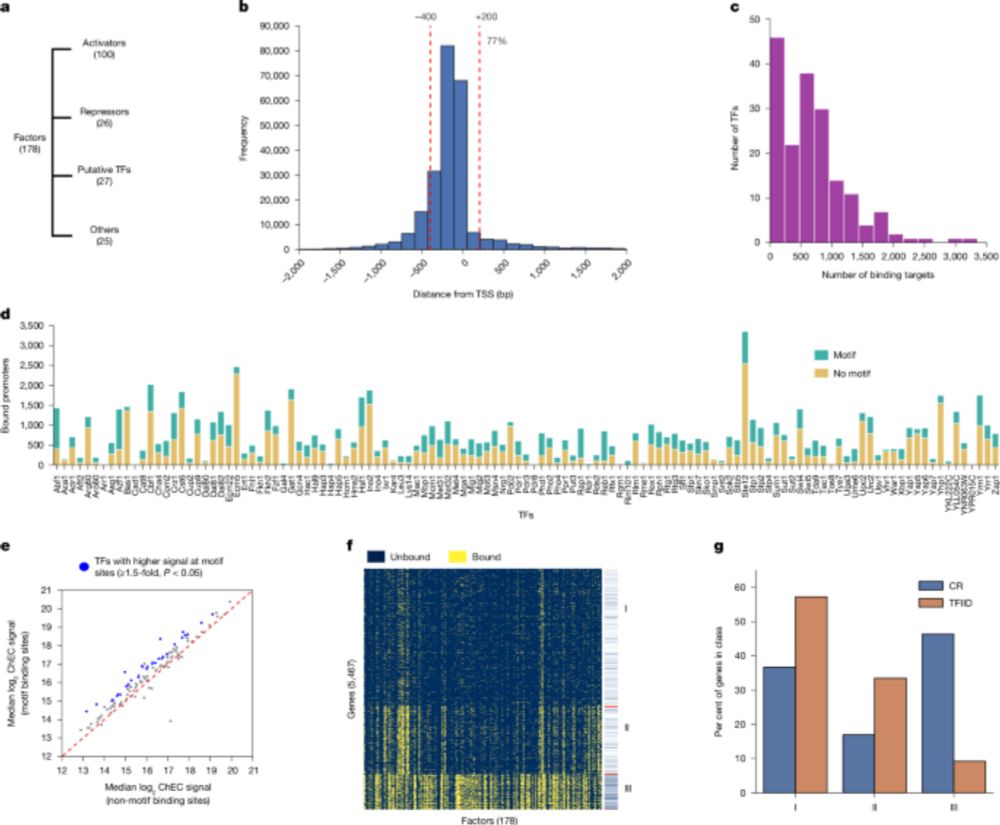
To the top of the "to-read" list. Looks like a heroic amount of work from the Hahn lab (large-scale ChEC-seq compendium!) www.nature.com/articles/s41...
16.04.2025 16:04 — 👍 56 🔁 28 💬 3 📌 2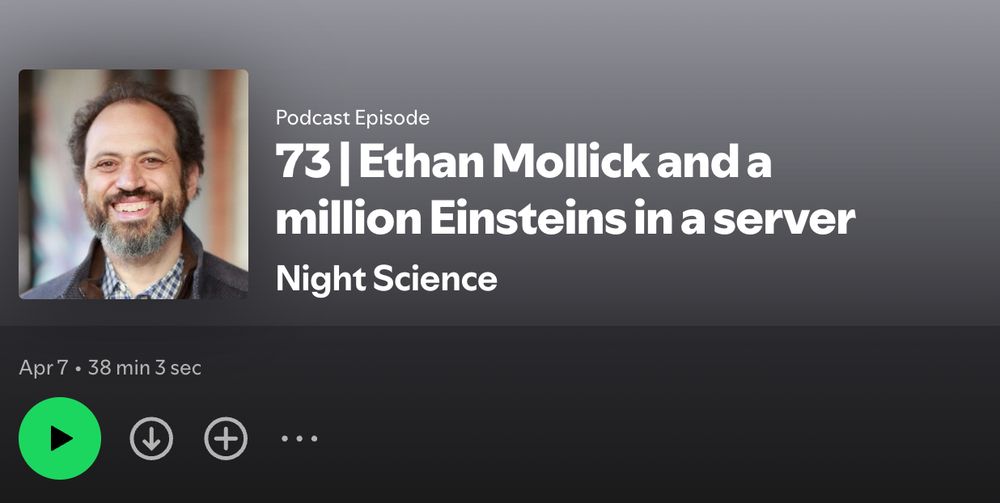
This is a great podcast episode on using ChatGPT and the likes in science! Spoiler alert: A great prompt to make it generate good ideas for you is "Move 37 me!".
@nightsciencepod.bsky.social open.spotify.com/episode/5j73...
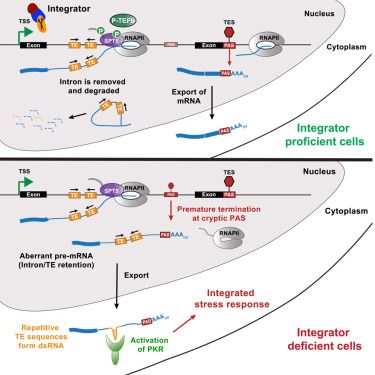
Now online! Integrator loss leads to dsRNA formation that triggers the integrated stress response
14.04.2025 22:38 — 👍 47 🔁 19 💬 0 📌 1
How can we exploit AI's hallucinations to make us more creative by generating new connections and ideas?
We talk about it on this week's Night Science Podcast
@nightsciencepod.bsky.social @emollick.bsky.social
podcasts.apple.com/us/podcast/n...
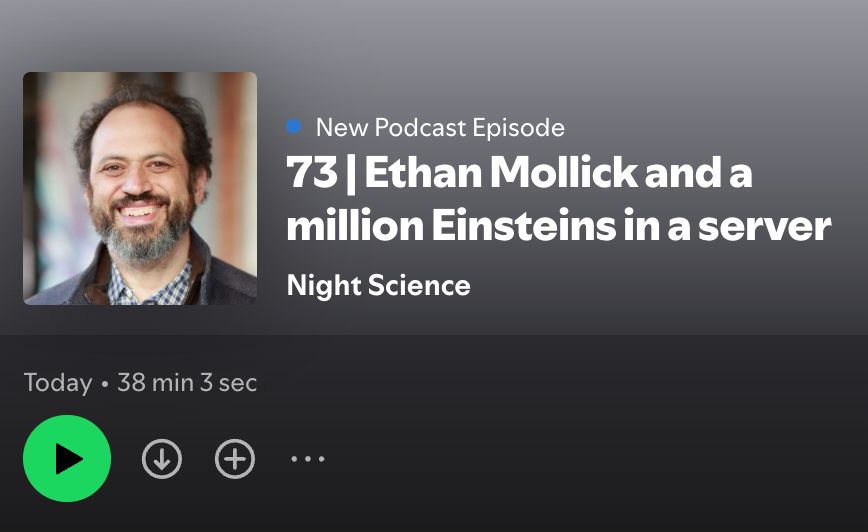
AI was ridiculed as recently as 5 years ago, but today it’s hard to conceive of a future without it. We must talk about how this tool can make us more creative for coming up with new research ideas and helping us test them. Check out @emollick.bsky.social on the podcast @nightsciencepod.bsky.social
07.04.2025 18:00 — 👍 10 🔁 4 💬 2 📌 0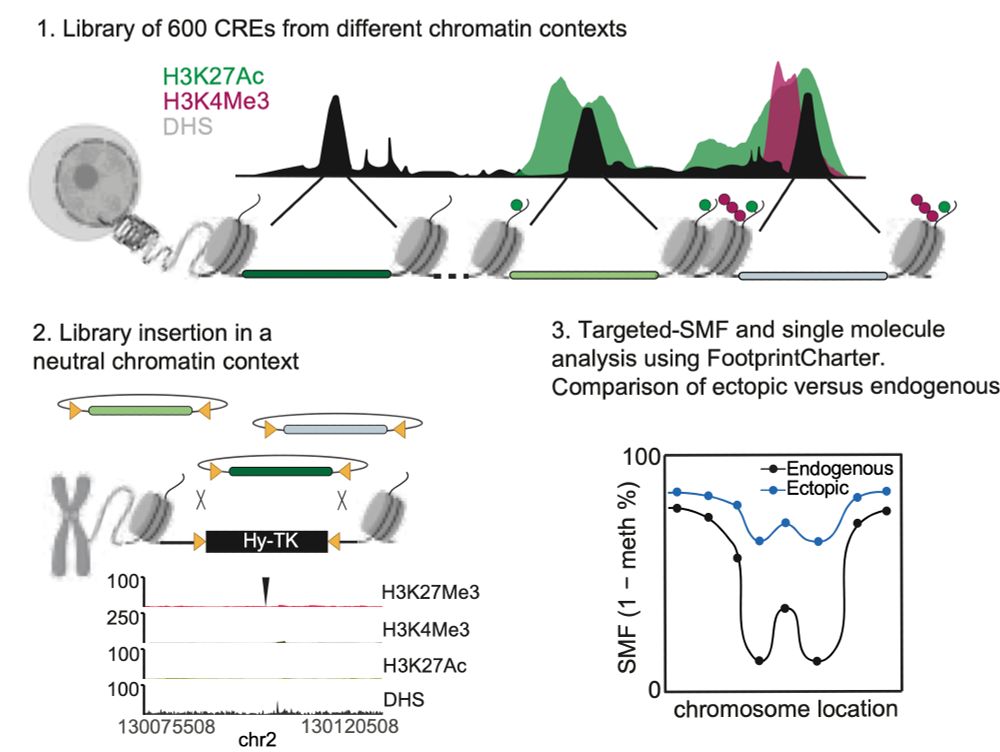
Happy to share the latest story from @arnaudkr.bsky.social's lab @embl.org! With @guidobarzaghi.bsky.social, we used Single Molecule Footprinting to quantify how often chromatin is accessible at enhancers after TF and chromatin environment changes! Check our preprint bit.ly/3XQMFxN + thread ⬇️ 1/11
08.04.2025 13:51 — 👍 76 🔁 33 💬 4 📌 2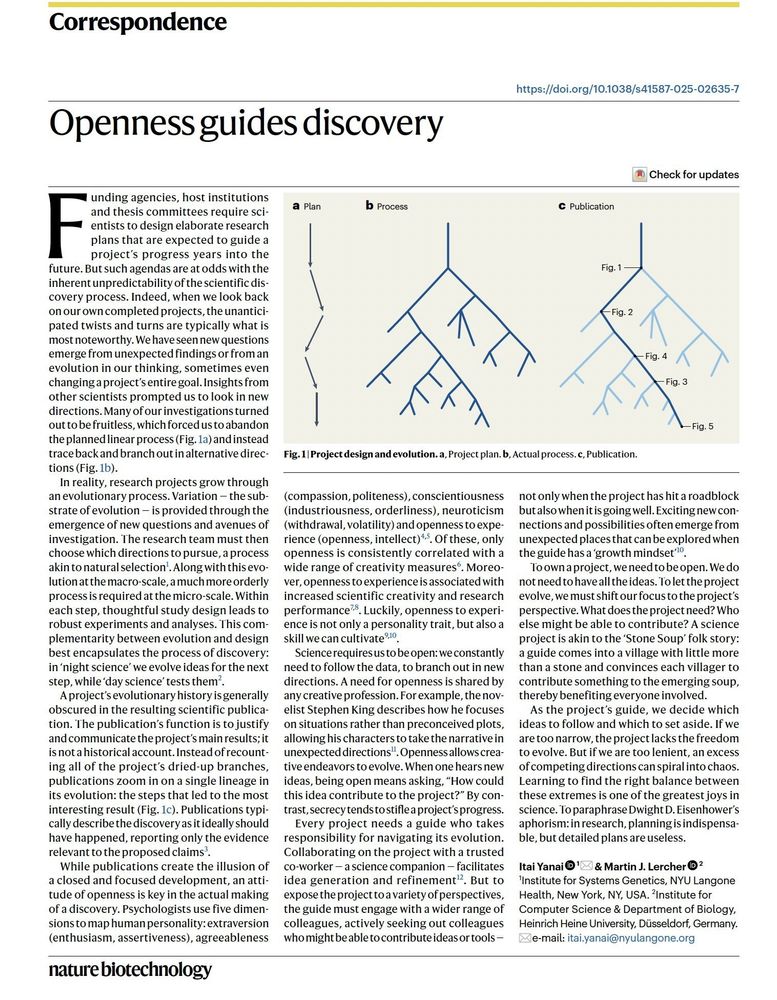
Contrary to popular belief, what is important in science is as much its spirit as its product: it is as much the openmindedness, the primacy of criticism, the submission to the unforeseen, however upsetting, as the result, however new that may be. – Francois Jacob
www.nature.com/articles/s41...